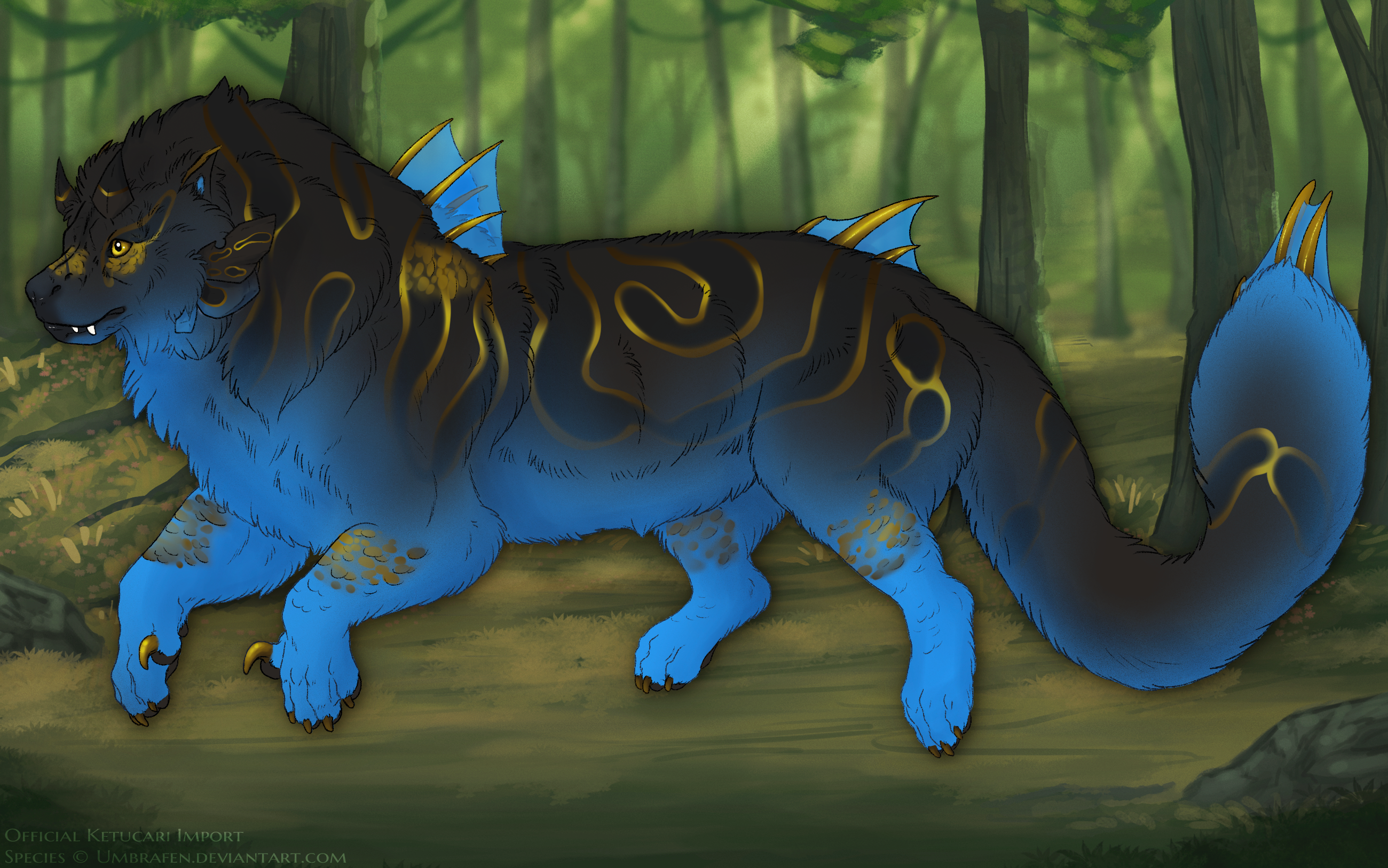Antiqued
Examples
Basics
Color and Shape
The antiqued effect should be created by using a darker shade of the base coat and creating semitransparent shadowing where shadows would naturally fall. (This may vary depending on the direction of the light source chosen!) The opacity can vary, as long as the base coat is identifiable underneath. Some degree of hue shift is allowed to create a more natural "shadow", as long as it is not so strong to parse as a different color.
Range
Antiqued can cover any part of the body, but must be immediately recognizable.
Glass Vs. Antiqued
Antiqued can cause some degree of highlighting on the ketucari's pelt to accentuate the shadows even without Glass present. However, the focus of the design should be on the shadows, rather than the highlights. Both genes in combination can be used to create very deep, stark shading on the ketucari with fully developed highlights and shadows for a highly metallic effect.
Interaction with Other Markings
![]() Antiqued covers all markings except white marks.
Antiqued covers all markings except white marks.![]() Antiqued may optionally cover white marks.
Antiqued may optionally cover white marks.![]() In combination with glass, antiqued can accentuate glass's highlights by creating metallic shadows on the ketucari's pelt-- the effect should resemble ahkal teke horses or polished metal.
In combination with glass, antiqued can accentuate glass's highlights by creating metallic shadows on the ketucari's pelt-- the effect should resemble ahkal teke horses or polished metal. ![]() Antiqued can take on a much wider range of hues when combined with shimmer, to better accentuate shimmer's iridescense.
Antiqued can take on a much wider range of hues when combined with shimmer, to better accentuate shimmer's iridescense.![]() Antiqued displays normally on all color mutations, including Albino.
Antiqued displays normally on all color mutations, including Albino.

